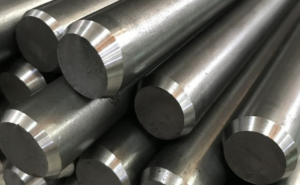In the shipbuilding industry, spring steel, as a high-performance alloy material, is highly favored due to its remarkable elasticity, wear resistance, impact toughness, and fatigue resistance. It finds ubiquitous applications across various components, including the engine system, vibration damping devices, fastening devices, and hull structures, making it one of the most commonly used materials in shipbuilding. In this article, let’s take a closer look at the application of spring steel in shipbuilding.

Application of Spring Steel in Shipbuilding:
Firstly, its application in the engine system of ships is paramount. Thanks to its exceptional elasticity, spring steel is capable of enduring substantial loads without experiencing permanent deformation upon load removal. This characteristic effectively mitigates vibrations generated during engine operation, ensuring the safe and stable functioning of the engine.
Secondly, spring steel plays a vital role in the vibration damping devices of ships. Its superior impact toughness enables it to withstand shocks and deformations under complex operating conditions. When employed in ship’s shock absorbers, spring steel can withstand significant loads and alternating stresses, offering excellent buffering and vibration damping capabilities. Not only does this reduce structural vibrations within the ship, but it also significantly contributes to noise reduction, thereby enhancing the comfort level for crew members and passengers.
Furthermore, spring steel is utilized in the fastening devices of ships. During their prolonged operational periods, ships are subjected to various alternating loads, necessitating the use of connection and fastening devices to ensure the reliability and stability of the joints. This demands that the fastening devices maintain stability over extended periods of use. Spring steel’s excellent fatigue resistance meets this requirement, ensuring stability even after prolonged service, thereby reducing the frequency of ship malfunctions and maintenance requirements, as well as lowering daily maintenance costs.
In addition, spring steel finds application in the hull structure of ships. The hull, being the primary component of a ship, typically comprises plates, keels, side keels, ribs, stem posts, stern posts, and other structural members. Spring components are often used to connect the plates and frameworks within the hull, posing stringent demands on the toughness and wear resistance of these components. Spring steel’s superior wear resistance enables it to withstand prolonged use in highly abrasive environments, effectively extending the service life of hull structural components.
Conclusion
In conclusion, spring steel plays a pivotal role in shipbuilding due to its outstanding properties. Its applications span from engine systems to vibration damping devices, fastening devices, and hull structures, providing robust support for the safe, stable, and comfortable operation of ships. As the performance and quality of spring steel continue to improve, its applications in the maritime sector are poised to expand further and deeper.
Why Choose Sino Special Metal?
Thank you for reading our article and we hope it can help you to have a better understanding of the application of spring steel in shipbuilding. If you are looking for spring steel suppliers and manufacturers online now, we would advise you to visit Sino Special Metal.
As a leading supplier of spring steel from Shanghai China, Sino Special Metal provides customers with high-quality spring steel products such as 65Mn Spring Steel, 50CrV4 Spring Steel, 9260 Spring Steel, and SUP9 Spring Steel at a competitive price.




